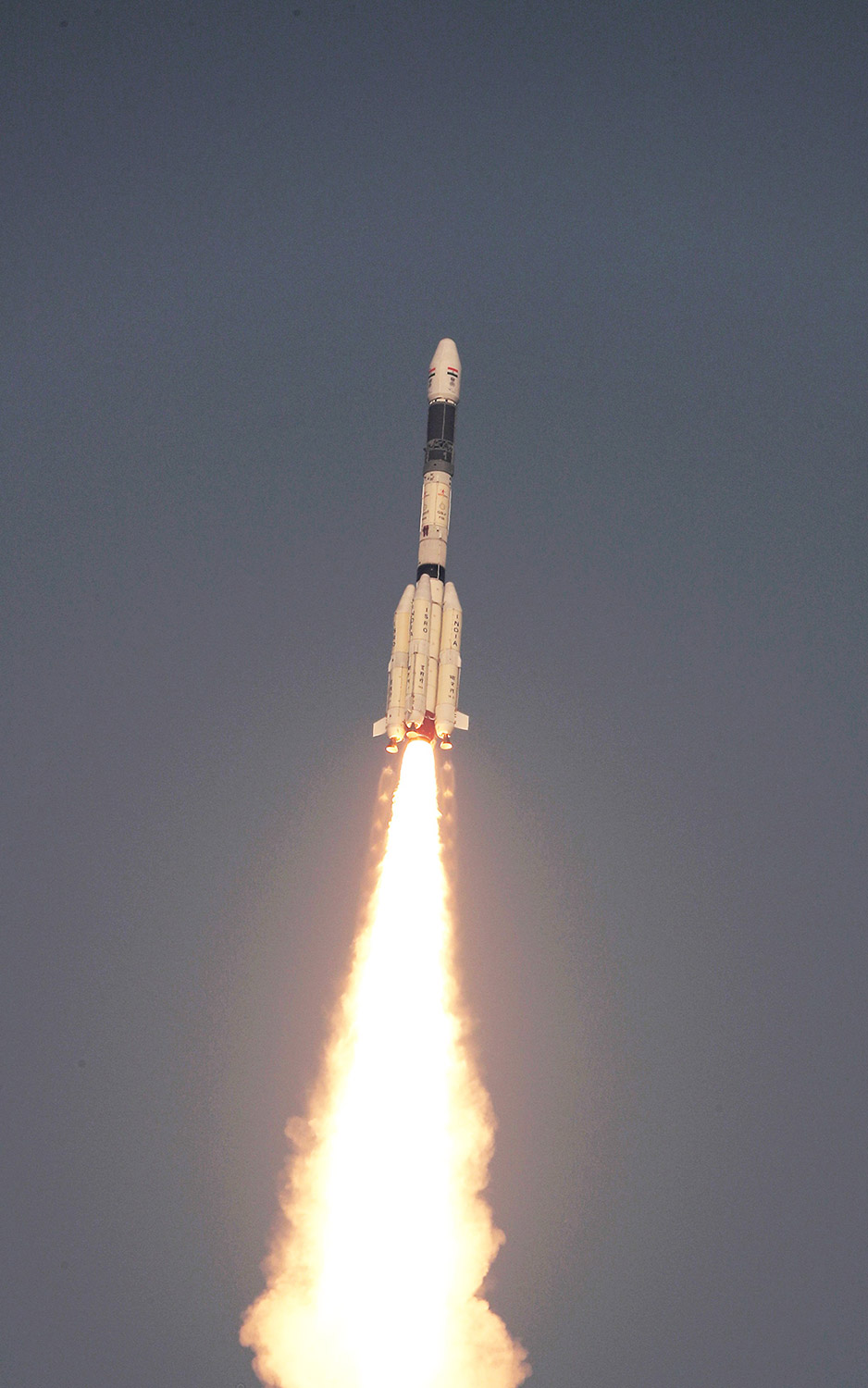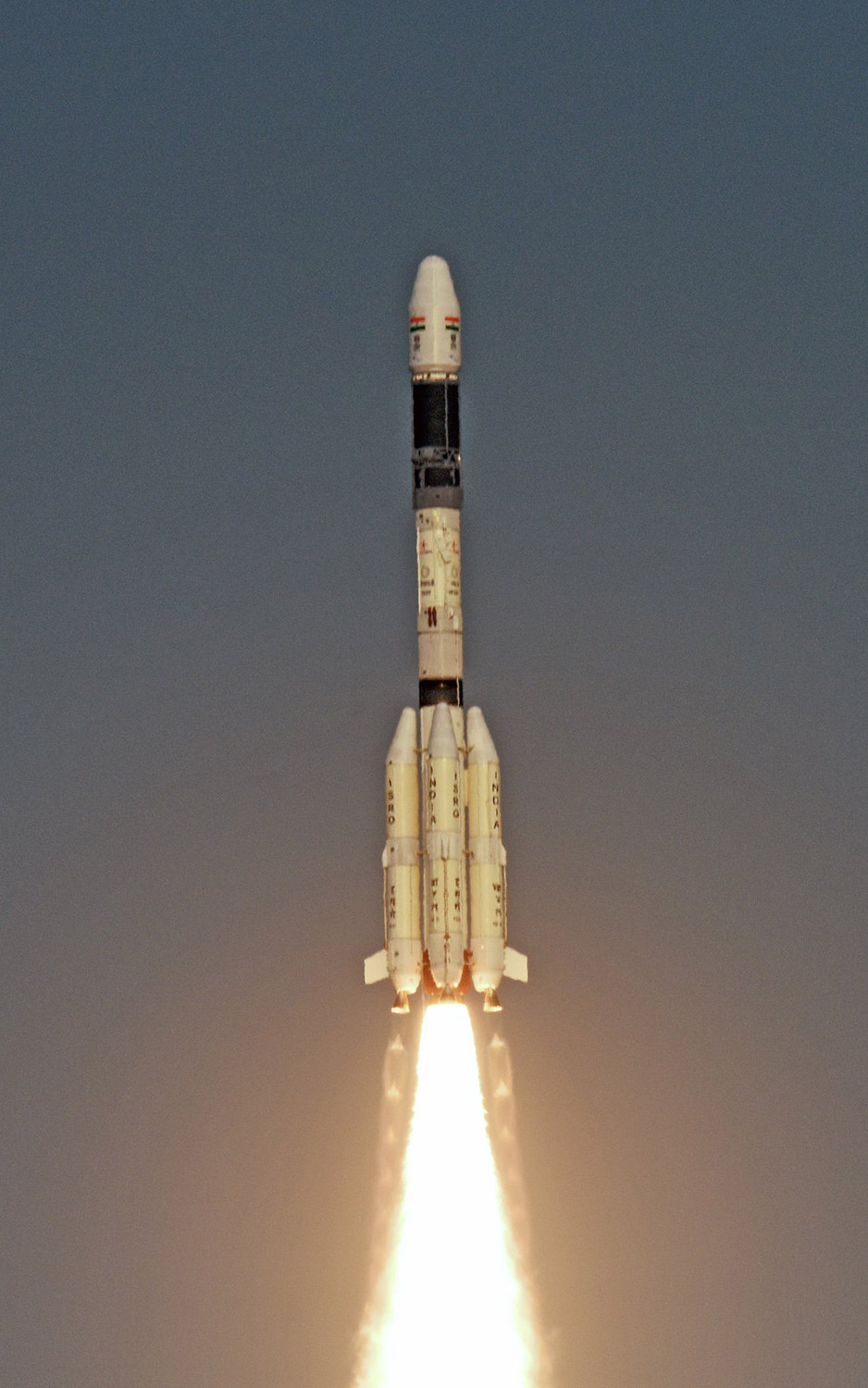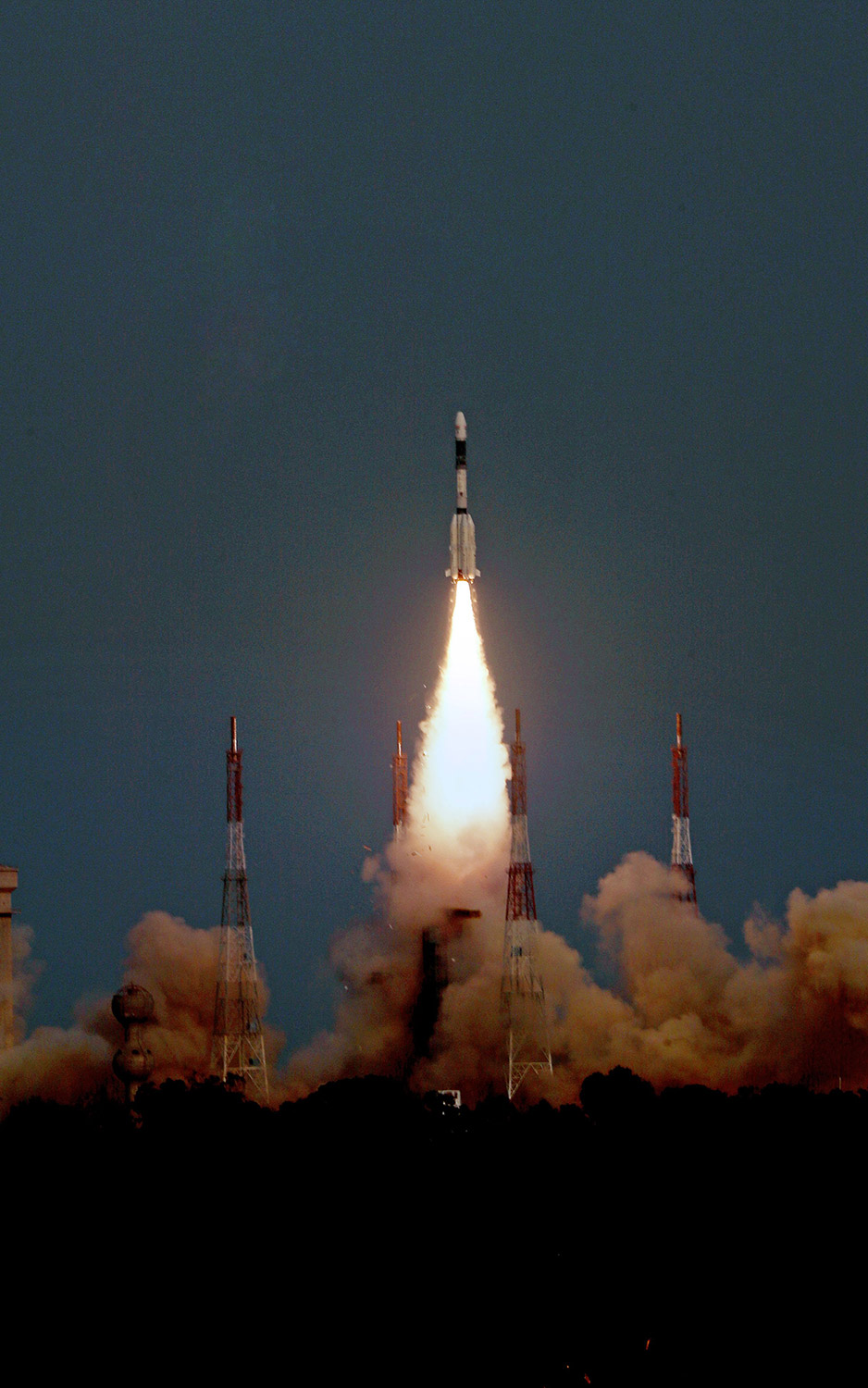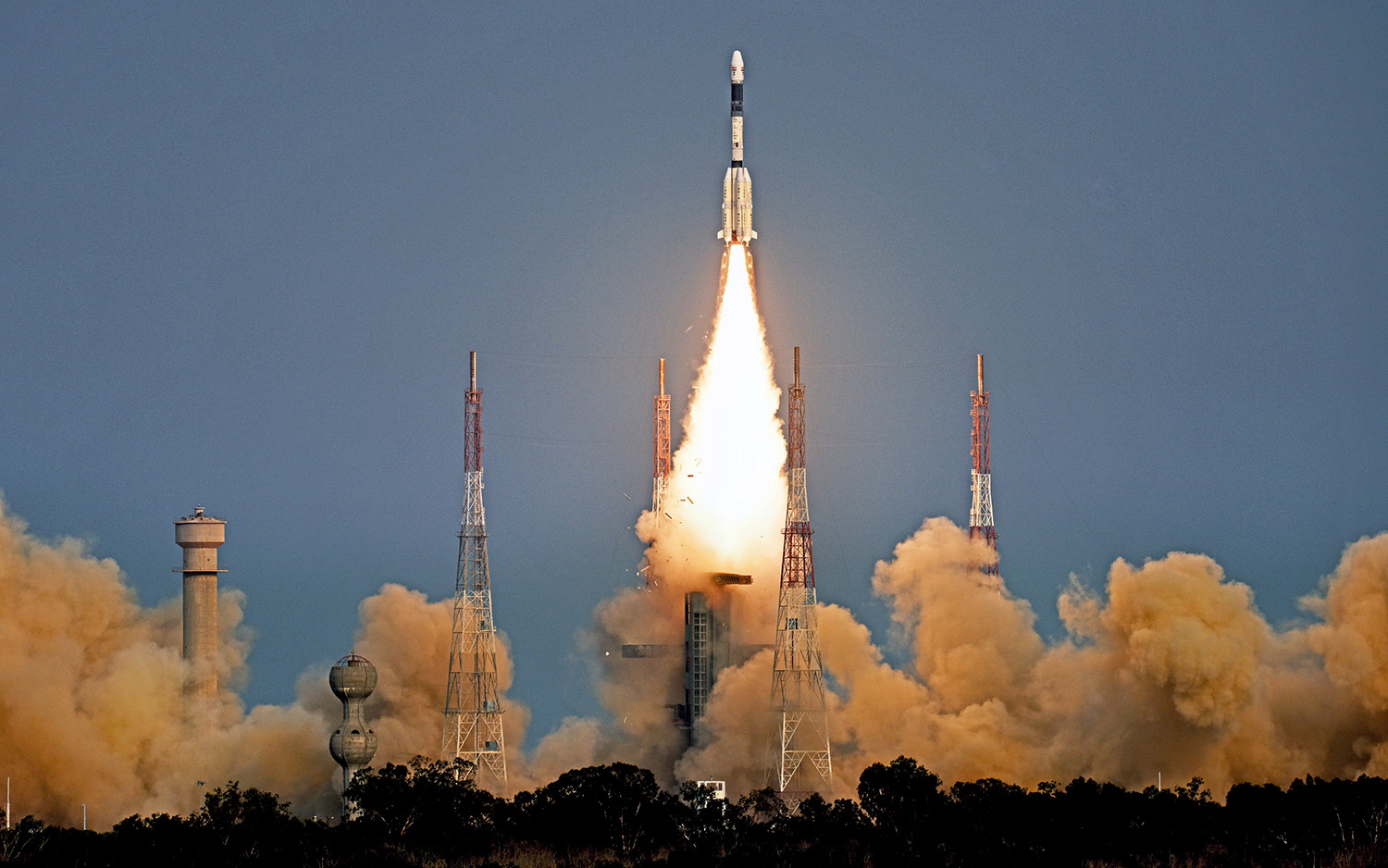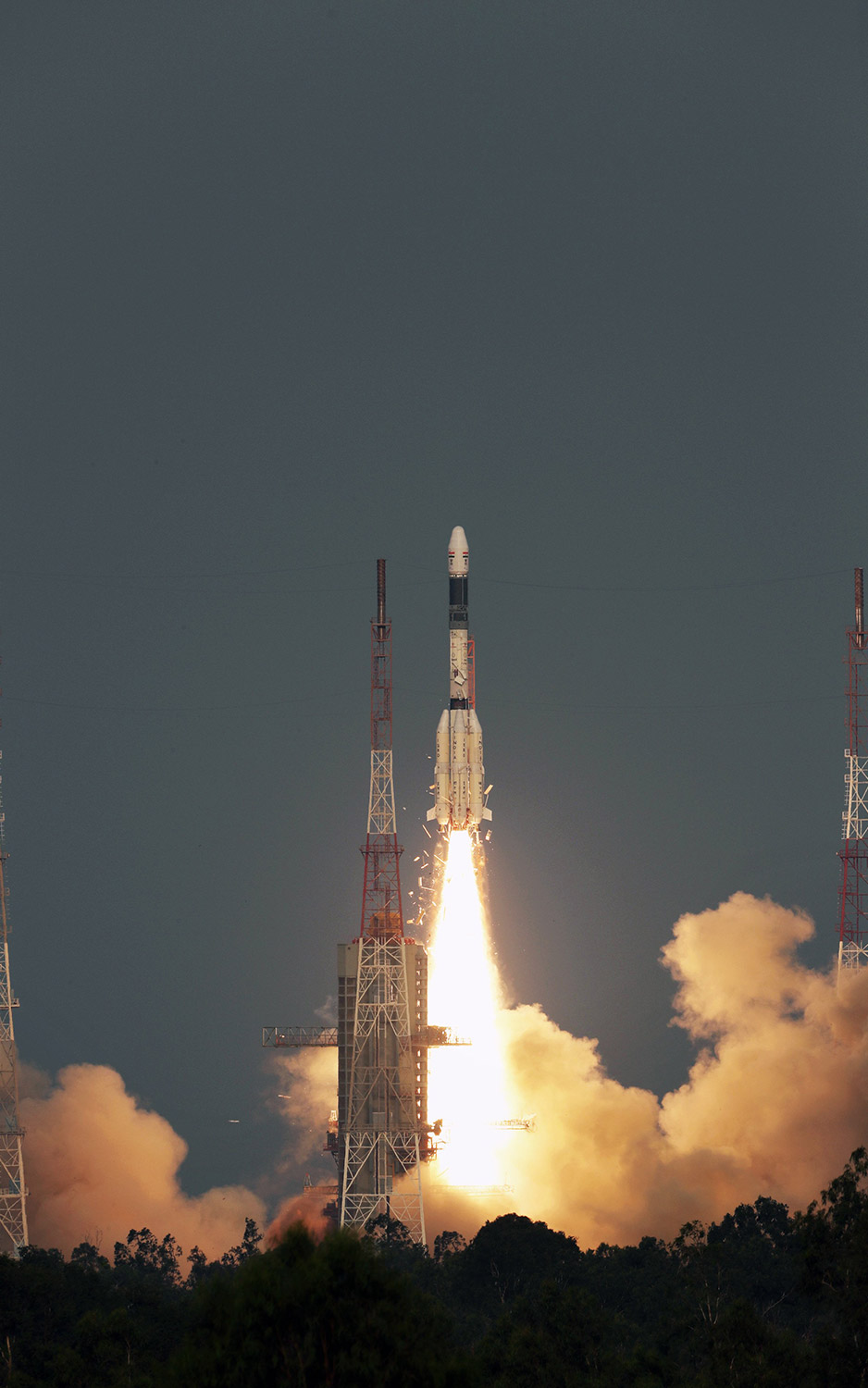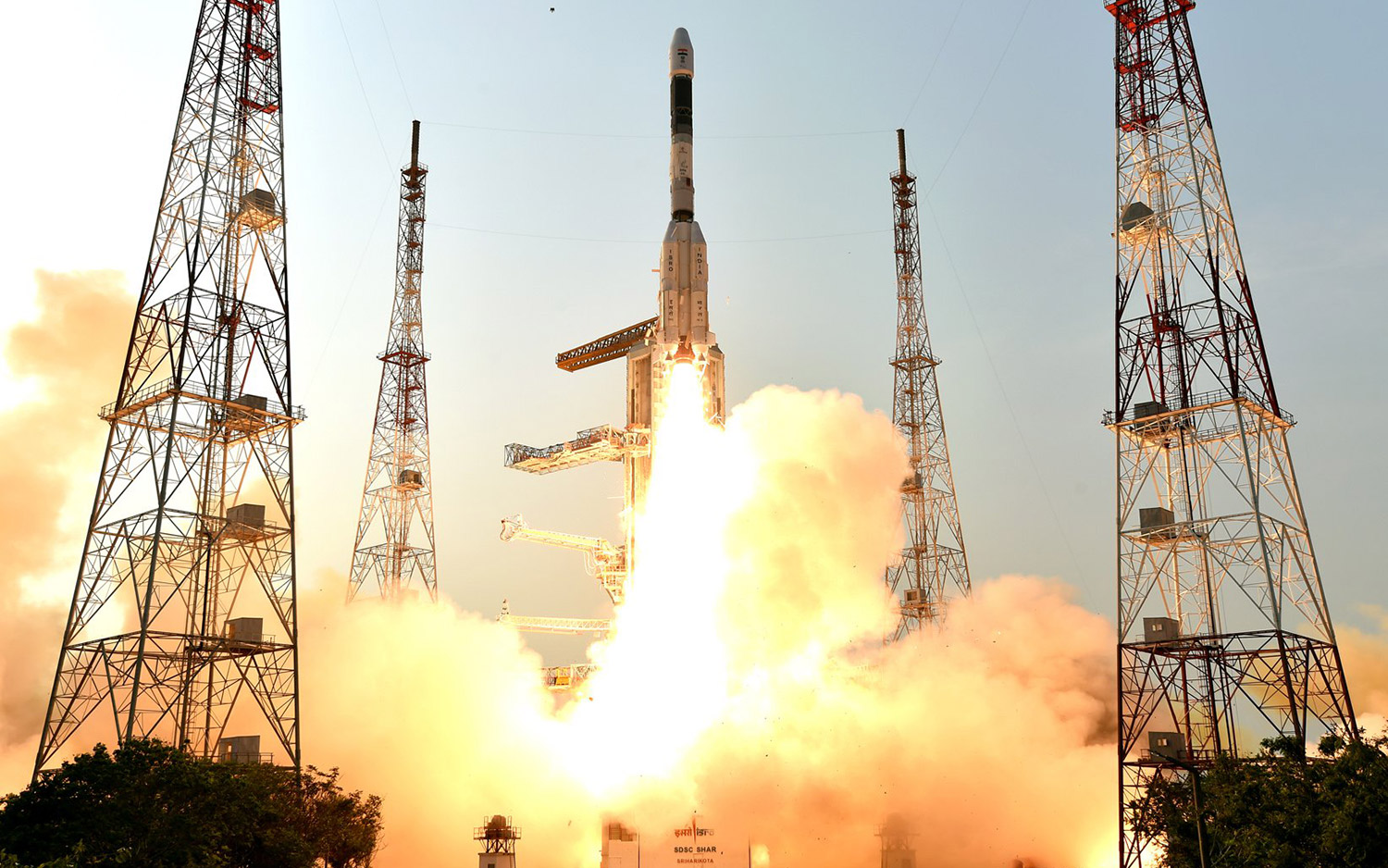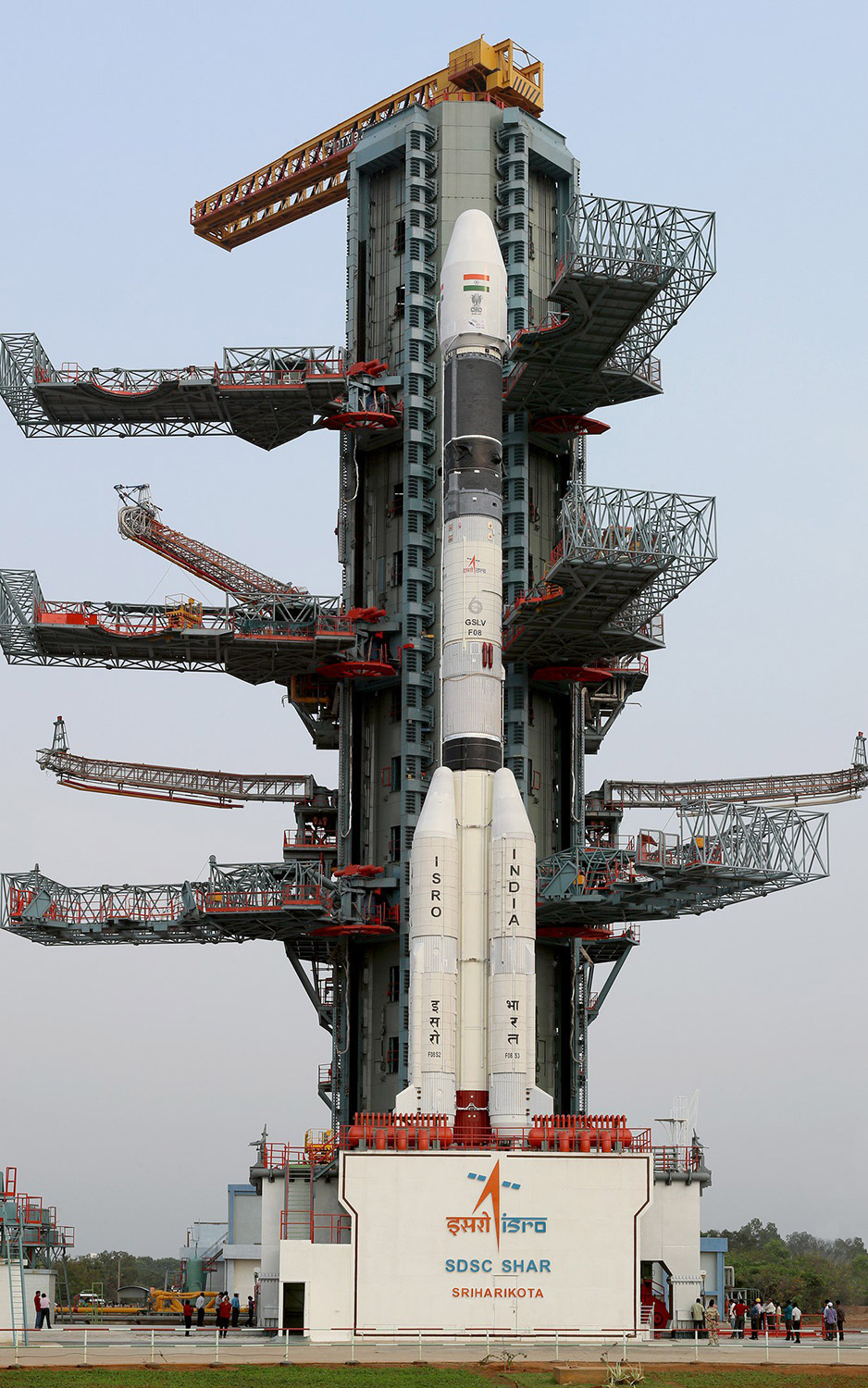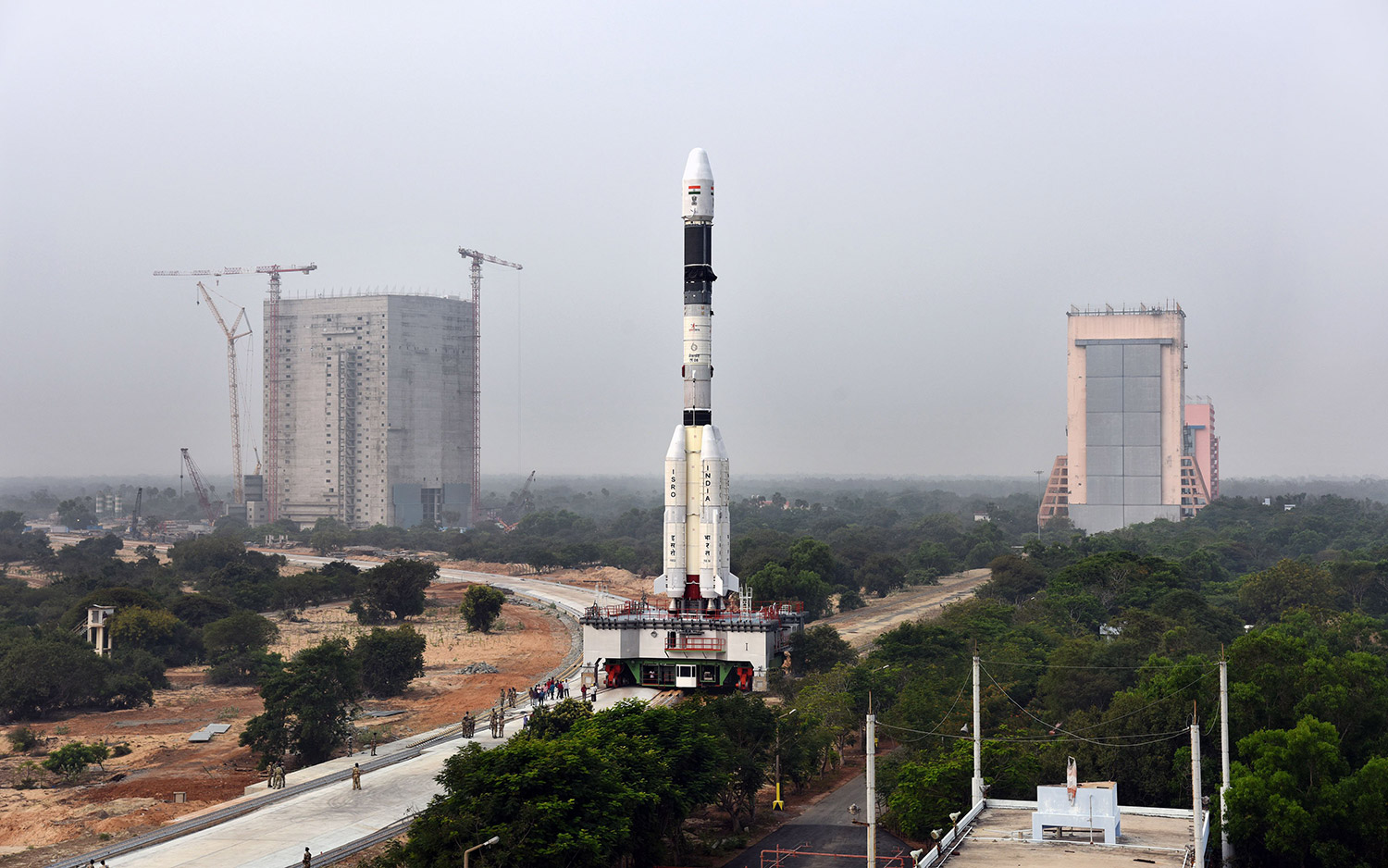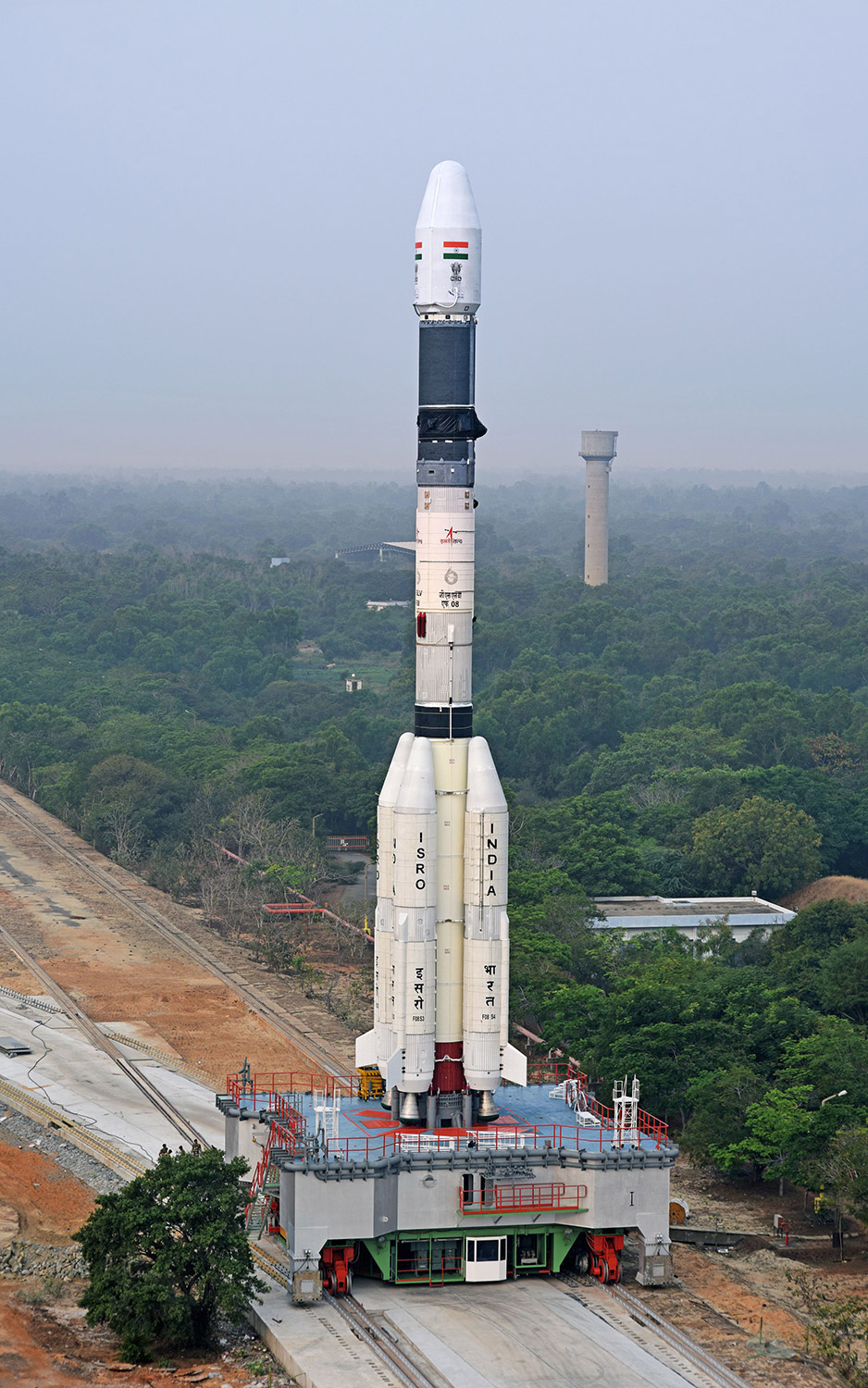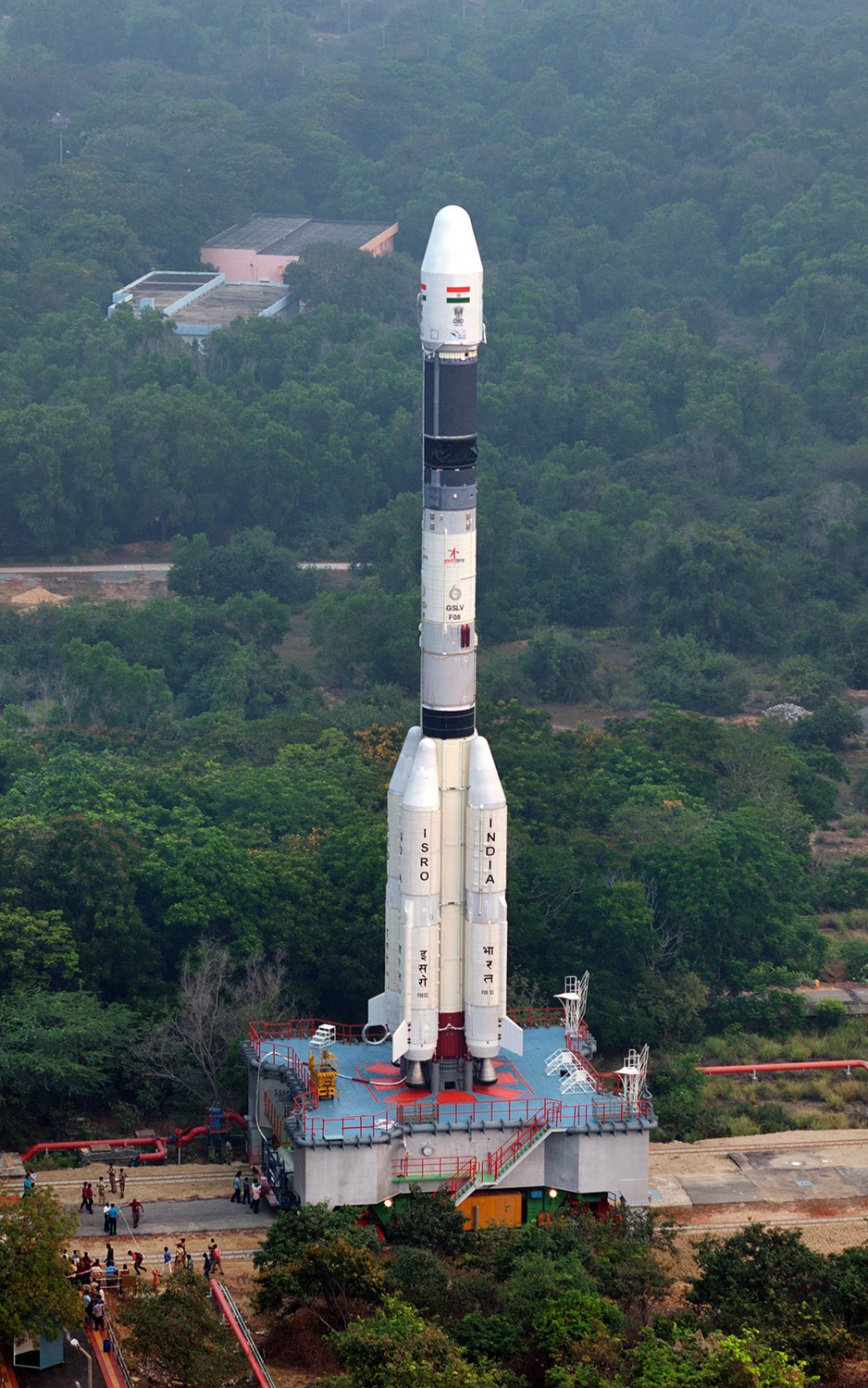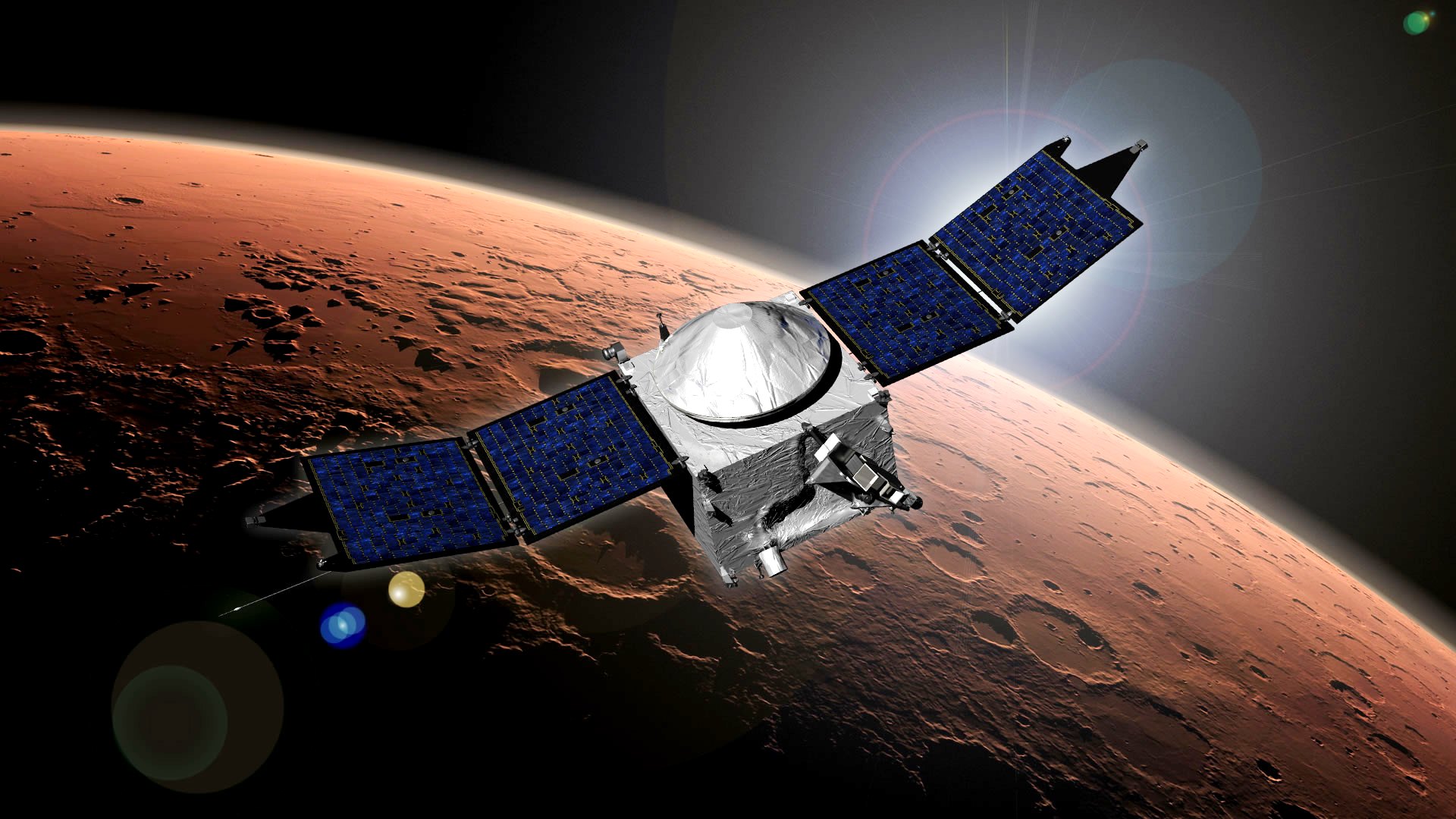In Photos: India's GSLV Rocket Launches GSAT-6A Communications Satellite
Success!
On March 29, 2018, the Indian Space Research Organisation launched the GSAT-6A communications satellite into orbit atop a Geosynchronous Satellite Launch Vehicle. But ISRO officials lost contact with the satellite days after launch. See how the mission went in photos here.
Reusing Rockets
The GSLV-F08/GSAT-6A launch is the 12th flight of Geosynchronous Satellite Launch Vehicle (GSLV). This launch is the sixth use of the indigenous Cryogenic Stage.
Improving Communications
The GSAT-6A, a high power S-band communication satellite configured around I-2K bus, is expected to supply data for about a decade.
Expanding Capabilities
Authorities hope to use the GSAT-6A for several developing technologies including handheld ground terminals and network management techniques that could be useful in satellite based mobile communication applications.
Up, Up and Up
The GSLV-FO8 rises above towers of the lightning suppression system in the March 29, 2018 launch carrying the GSAT-6A.
Liftoff in Progress
On March 29, 2018, the GSLV-F08/GSAT-6A rises above the Umbilical Tower at the Second Launch Pad,
Ignition!
Rockets begin to roar and flash as liftoff begins at the Second Launch Pad.
Breaking space news, the latest updates on rocket launches, skywatching events and more!
Before Launch
At the Second Launch Pad, the GSLV-F08 makes it to the Umbilical Tower for final checks and preparations.
The Full Picture
A sweeping view across the horizon includes the GSLV-F08 aboard the Mobile Launch Pedestal and the Vehicle Assembly Building in the distance.
Tall and Strong
The GSLV-F08 stands atop the Mobile Launch Pedestal on its way to Umbilical Tower on the Second Launch Pad.
Traveling to the Launch Pad
A side view of the Mobile Launch Pedestal progressing toward the Umbilical Tower, carrying the GSLV-F08. Technicians and team members can be seen around the pedestal.

Christine Lunsford joined the Space.com team in 2010 as a freelance producer and later became a contributing writer, covering astrophotography images, astronomy photos and amazing space galleries and more. During her more than 10 years with Space.com, oversaw the site's monthly skywatching updates and produced overnight features and stories on the latest space discoveries. She enjoys learning about subjects of all kinds.
